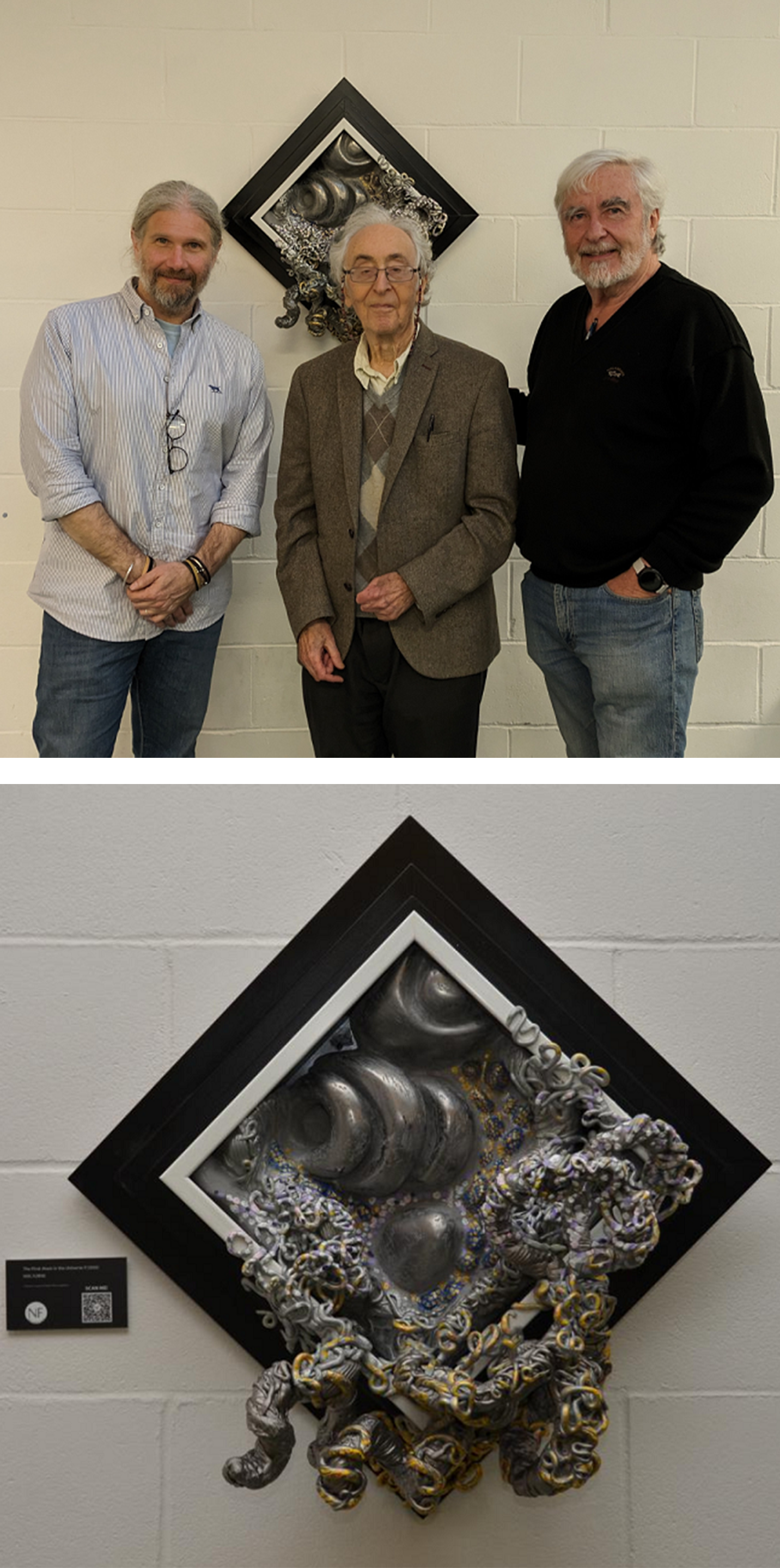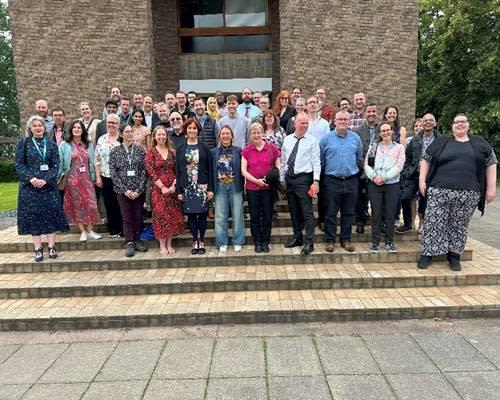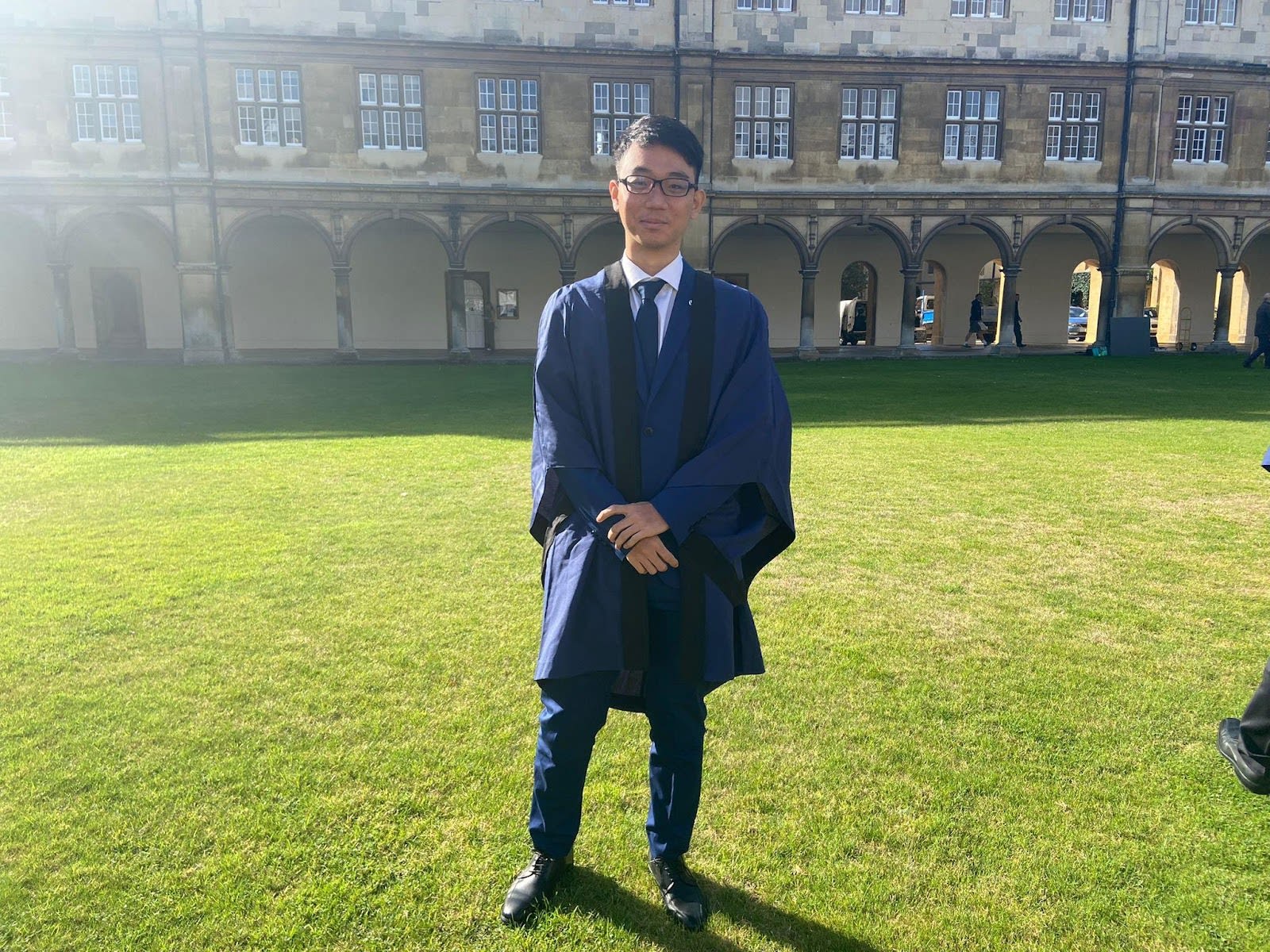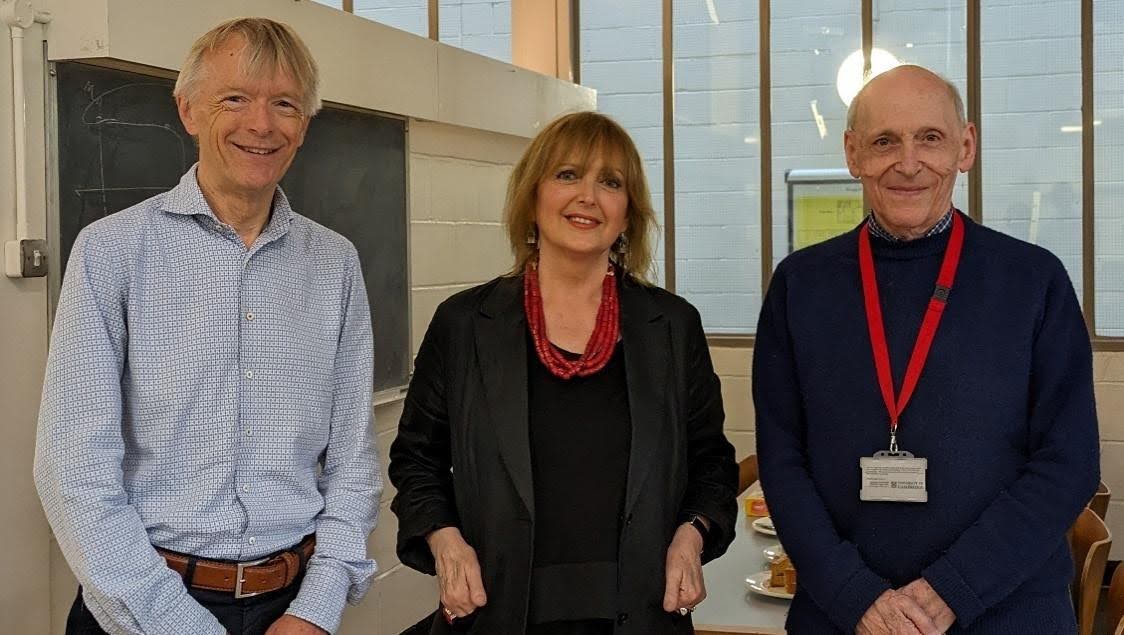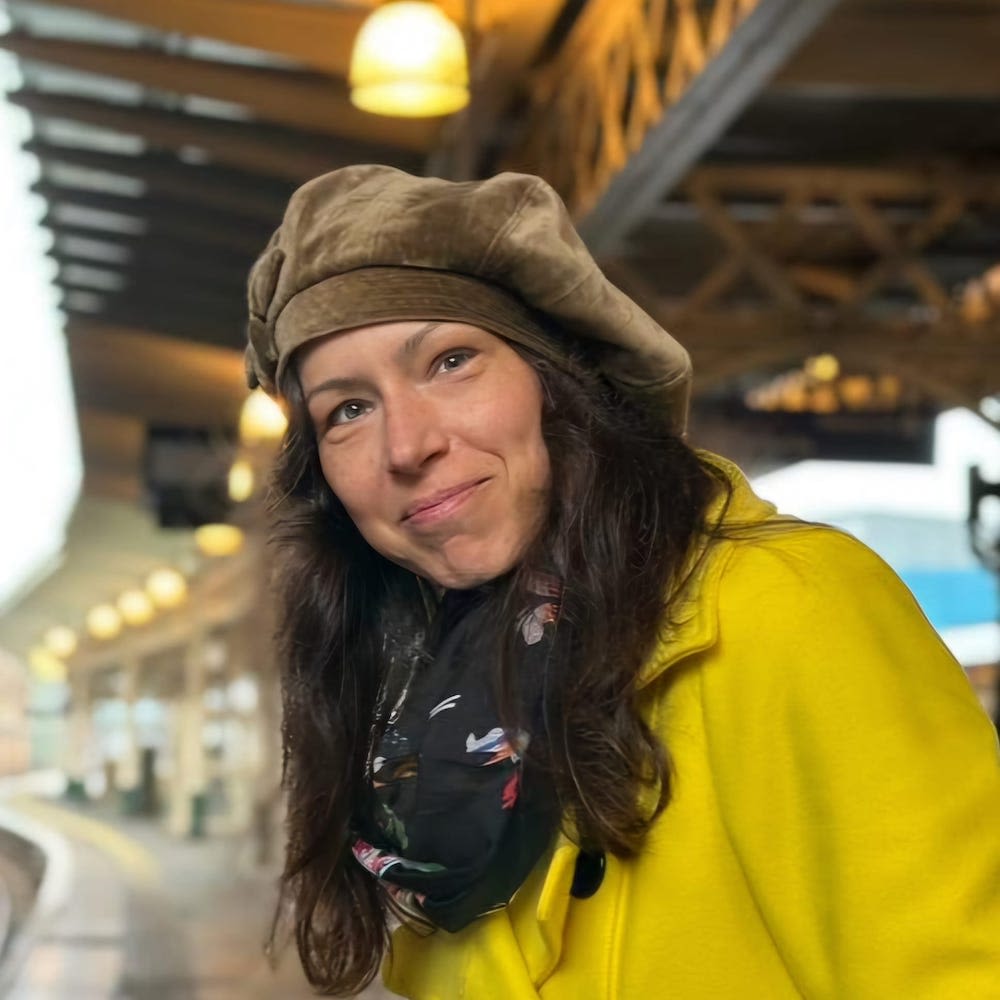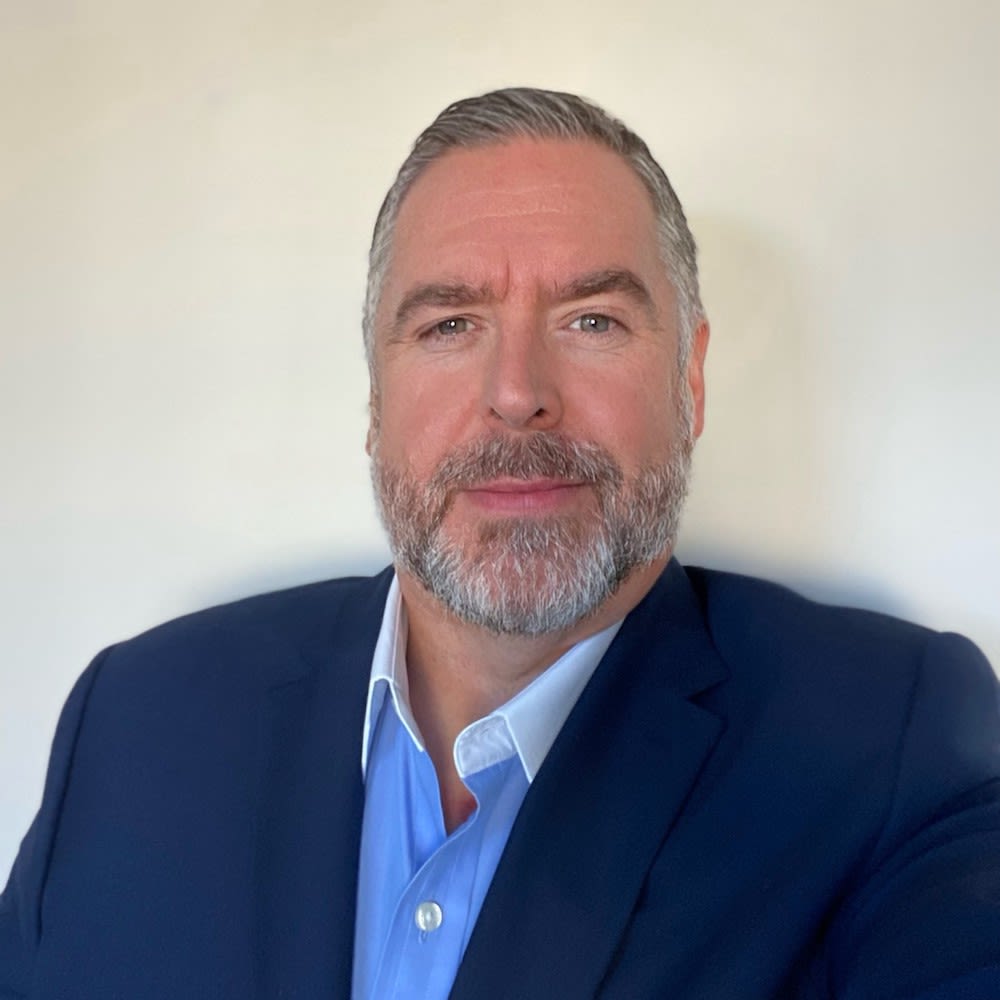Department news
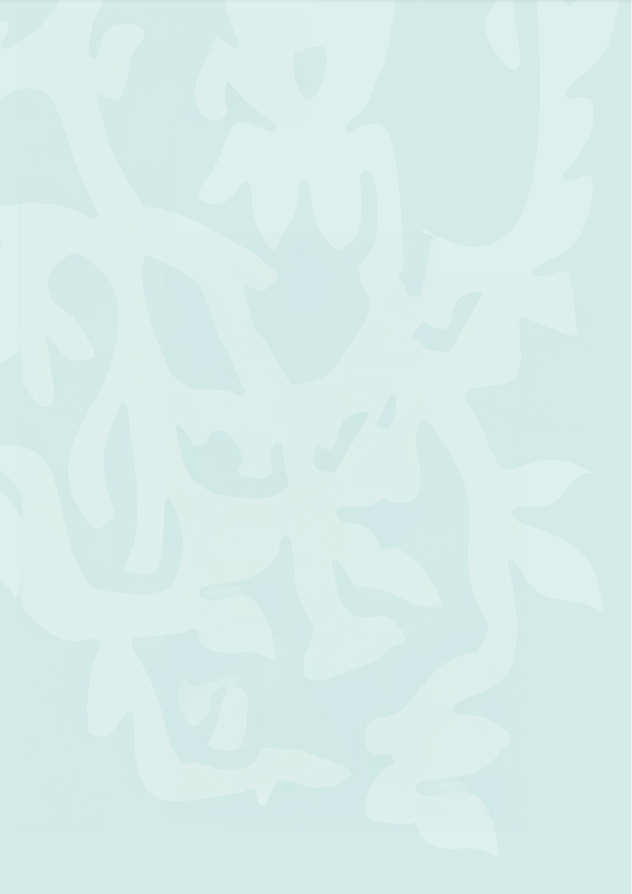
Tribute sculpture unveiled in honour of Brian Josephson
A tribute sculpture titled ‘The First Atom in the Universe II’
was unveiled in the TCM seminar room to honour Nobel Laureate Emeritus Professor Brian Josephson. The unveiling ceremony was attended by Brian Josephson himself, alongside the artist, Nigel Fleming, Mete Atatüre, Head of the Cavendish Laboratory, and many members of the TCM group.
‘The First Atom in the Universe II’ symbolises hydrogen as the ‘Mother of all matter,’ highlighting the origins of elements
and life from cosmic processes. Hydrogen, the universe’s first atom, is the cornerstone from which all atoms and isotopes in the periodic table were formed. These atoms were constructed through combinations of hydrogen atoms within the furnaces of distant stars and subsequently dispersed across the cosmos by supernova explosions. These elements then engaged in chemical reactions to form complex compounds, eventually leading to the transition from chemistry to biology, giving rise to the diverse array of life.
The sculpture poignantly depicts the hydrogen atom’s crucial role in the creation of matter. Its intricate design, featuring the ‘popcorn effect’ in the electron orbitals, vividly illustrates the constant creation and destruction of quantum matter, driven by gauge force fields that swirl around matter.
Image 1: Head of Department Mete Atatüre, Brian Josephson and artist Nigel Fleming. | Image 2: The first Atom in the Universe II.
Tomi Baikie announced as one of the 2024 Schmidt Science Fellows
Tomi Baikie, former Research Fellow at the Cavendish in Akshay Rao’s group, has been announced as one of the thirty- two scientists comprising the 2024 Schmidt Science Fellows cohort.
Schmidt Science Fellows are early-career researchers who drive transformative change across various sectors through their interdisciplinary research. As a 2024 Schmidt Science Fellow, Tomi will pioneer new understanding of how the body works through non-contact electrical measurements. Our skin has
a map of different electric potentials. But it is not known why these exist, primarily because they are very difficult to measure. By translating techniques from the world of semiconductor physics, Tomi aims to measure these maps without even touching the skin. The work has direct implications for people who suffer from the death of small nerve fibres.
The fellows undertake a year-long Science Leadership Program to develop the skills, experience and networks necessary to become the next generation of interdisciplinary science leaders alongside a one to two-year research placement at a new institution, which will kick off later this year.
Tomi will be moving to MIT for his work and will additionally hold an affiliation with the Cavendish Laboratory during this period.
Isaac Physics team hosts 10th Annual Teacher Symposium
The Isaac Physics team was delighted to welcome 75 UK secondary school teachers to its tenth annual Teacher Symposium in July. Teachers were shown the latest features to enable them to support learning in their schools using the Isaac Physics platform.
They were especially enthusiastic about the new resources prepared for age 11-13 students to build numerical intuition for physics concepts, as well as new resources for the sixth form teaching of Chemistry and Biology as well as GCSE and sixth form mathematics. Teachers also enjoyed four sessions of physics problem solving with Isaac Physics’ Director, Lisa Jardine-Wright, and a plethora of demonstrations thanks to Project Physicist Robin Hughes.
There were many opportunities to share good practice within the very positive atmosphere of the event, which is regarded as the highlight of the year for many teachers and ‘the best CPD ever’ by at least one participant! The costs of attending (including food and accommodation) were covered by the Isaac Physics team enabling teachers to attend even at a time of tight school budgets.
Image: Isaac Physics tenth annual Teacher Symposium
Top Physics student wins Prize for exceptional theoretical physics work
Many congratulations to Ziyou Lu (above), who has been awarded the Mark Warner Prize for talented theoretical physicists, for his outstanding work in Experimental and Theoretical Physics in his 3rd year of the Natural Sciences Tripos.
The prize, sponsored by The Ogden Trust, is awarded in memory of Professor Mark Warner, FRS, theoretical physicist, and pioneer in the field of liquid crystal elastomers who inspired and mentored generations of physicists.
Reflecting on his love of physics, Ziyou, who is a 3rd-year Physics student at Trinity College, said: “Initially, I was drawn to physics as it felt the most quantitative and concrete out of the sciences in high school. As I learned more, I started to appreciate the role of mathematics in physics more. Finding applications of abstract mathematical topics like group theory in physics is always surprising and often leads to very beautiful results.”
Cambridge welcomes QuanTour: a quantum journey across Europe
The Cavendish Laboratory is excited to be the host
of QuanTour, an exciting European outreach initiative celebrating the International Year of Quantum Science and Technology 2025.
QuanTour brings a cutting-edge quantum light source to 12 top laboratories working on quantum dots across Europe. It aims to provide insights into quantum communication research and promote public engagement with quantum science’s transformative potential.
Cambridge is the 6th stop on the journey, marking its halfway point. Arriving directly from the Centre de Nanosciences et
de Nanotechnologies in Paris, the light source will be hosted in Mete Atatüre’s and Dorian Gangloff’s labs for a few weeks in October.
At the heart of the experience lies the quantum light source that produces single photons – the smallest quantity of light. “The quest of producing single photons keeps scientists around the world engaged. Here, these single photons are generated by a quantum dot – a tiny structure made of semiconductor material,” said Mete Atatüre, head of the Quantum Optical Materials and Systems Research Group and ‘QuanTour Hero’.
“Its size is just a few nanometres – think of it like the size of
a tennis ball compared to the Earth. The quantum dot is embedded in a bull’s eye-like structure, designed to get those photons out.”
At every lab along the QuanTour journey, hosting scientists are carrying out measurements on the quantum light source to check whether it is actually emitting individual photons.
“We also want to use this opportunity to give the public a peek behind the curtain at how quantum physicists work, and show how quantum technologies will lead to groundbreaking advancements in our society that will shake up our everyday life,” said Atatüre.
QuanTour is a project of the German Physical Society (DPG), organised by Dr Doris Reiter (TU Dortmund University, and Dr Tobias Heindel (TU Berlin University)
Congratulations to Cavendish staff reaching 25 years of service
We would like to express heartfelt gratitude to our 10 staff members who have dedicated 25 years to the Cavendish and are marking this impressive milestone this year: Mark Ashdown (Astrophysics), Harvey Beere (Semi-Conductor Physics), David Buscher (Astrophysics), John Ellis (Surfaces, Microstructure and Fracture), Debbie Hall (Finance), Christopher Jones (HEP), Barry Shores (Technical Services), Vladislav Stolyarov (Astrophysics), Martin Underwood (Stores), and John Young (Astrophysics).
Some of them, along with their guests, joined the Vice- Chancellor, Professor Deborah Prentice, at a celebratory event held at the Cambridge Union Society in the summer.
In her speech, the Vice-Chancellor took a moment to reflect on the world as it was in 1999, highlighting how both the University and the global landscape have transformed over the years.
She thanked staff for their commitment and service to the University, recognising their vital role and experience. “A university can only be as good as its people – Cambridge is an excellent university, and we rely on excellent people,” she said.
“Reaching this milestone of 25 years is not just about longevity, or persistence. It is also about embodying the culture of the place. In an institution as complex as collegiate Cambridge, experience counts for a lot, and you are the keepers of that institutional memory.”
Image: Nevenka Huntic with Richard Batley (left) and Richard Ansorge (right), both former academic librarians.
Farewell to Nevenka Huntic
Nevenka Huntic retired from her post at the Rayleigh Library earlier this year after nearly 25 years of dedicated service
in the Physics Department. A farewell event was held in the Cavendish Common Room, where colleagues gathered to celebrate her contributions over coffee and cake.
Nevenka’s tenure at Cavendish has been distinguished by significant achievements and deep professional relationships. Reflecting on her career, she remarked, “I felt welcomed from the start. Everybody was so nice and friendly, which was the main reason why I stayed for 25 years.”
As a trained architect and librarian, Nevenka used her dual expertise to redesign the layout of the Rayleigh Library upon her arrival in 1999, enhancing its functionality and aesthetics. More recently, she played a crucial role in changing the layout of the future library in the Ray Dolby Centre to provide to provide an exceptional resource and study environment for current and future generations of physics staff and students.
We thank Nevenka for her incredible contribution over the years and wish her all the best for the future!
Mariusz Naguszewski from the Cryogenics Facility retires
Mariusz Naguszewski retired from the Cavendish in May this year. Dan Cross, Cryogenics Facility Manager, has shared the following about him:
“Mariusz has been with us since 2010 and has been invaluable in keeping the Cryogenics Facility going – always with a smile and a joke and nothing was ever too much trouble. He will be missed but we’re happy to see him go to his idyllic dotage back in native Poland – even though he’ll probably be working even harder on the family smallholding (if that was possible)!”
We wish Mariusz the very best for the future.
Teuta Pilizota joins Cavendish Laboratory
We are delighted that Professor Teuta Pilizota joined the Department in September.
Teuta obtained her diploma in physics at the University of Zagreb before moving to do a DPhil in single-molecule biophysics of rotary molecular at the University of Oxford. After completing postdoctoral work from the Princeton University, where she established the experimental and theoretical framework needed to study bacterial pressure regulation at a single-cell level, she joined University of Edinburgh. She has been leading her research group at the University of Edinburgh since 2013, focusing on free energy regulation in bacterial cells.
Teuta has recently secured a prestigious Human Frontier Science Program (HFSP) grant to study the physico-chemical forces within bacterial cells that affect growth and survival. She will begin this collaborative research here at the Cavendish Laboratory alongside an international team of researchers. The study will focus on how the environment created inside bacteria effectively raises/lowers the temperature and influences the rate at which all reactions occur. The team hopes to shed light on this little-explored yet fundamental relationship between the intracellular physico-chemical environments and the overall rate of cell growth.
We extend a warm welcome to Teuta as she embarks on this exciting new chapter of her research with us during our significant 150th anniversary year.
New appointment to the Professional Staff
Rob Ingram-Brown – HR Manager
Rob Ingram-Brown joined the Cavendish Professional Service team on 1st July 2024 as our new HR Manager.
Rob has over 30 years’ experience in HR, having previously headed up teams in the chemical, manufacturing and pharmaceutical industries. During his career Rob and his teams have provided a full HR service to a wide range of employees including some 2000 strong scientific community at Johnson Matthey.
Other appointments
Louise Basham – Maxwell Centre Administrator
Dmitrii Buravlev – Procurement Supervisor
Debbie Fatibene – Purchasing Administrator
Khin Mon – System Developer/Administrator
Kevin Robinson – Senior Stores Assistant
Vicki Sparkes – Mott Hub Manager
